¡Exploring the Depths!Dive into the World of Underwater Photography with the Top 10 Cameras

Diving enthusiasts and underwater explorers know that beneath the ocean’s surface lies a world of unparalleled beauty. From vibrant coral reefs to majestic sea creatures, the wonders of the deep sea are a sight to behold.
For those passionate about capturing these mesmerizing moments, having the right underwater camera is paramount. With technology continuously evolving, there’s a diverse range of options catering to every photographer’s need. Here, we delve into the depths of underwater photography and present the ten best underwater cameras that promise to elevate your diving experience to new heights.
1. GoPro HERO12 Black
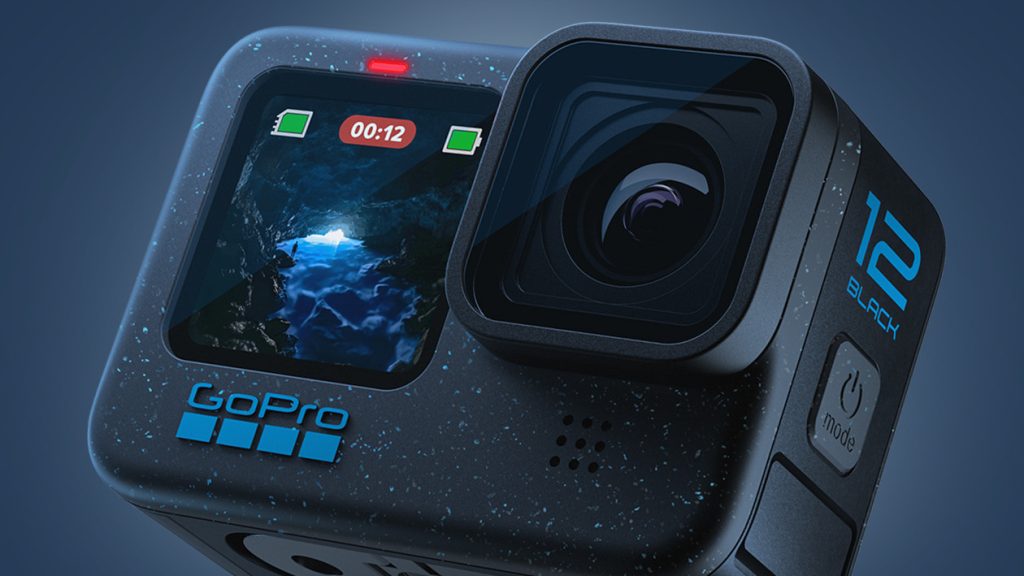
In September 2023, GoPro introduced the Hero 12 Black. An action camera that, without reinventing the wheel, introduces valuable improvements over its previous models. Designed for both extreme adventures and content creators, this version strengthens the overall experience with a few key tweaks.
Improved Performance and Battery Life
One of the most notable improvements is battery life. GoPro claims it lasts twice as long as the Hero 11, and it really shows. This translates into more time recording and less worrying about constantly charging it, which is ideal for long days of diving or exploring.
Smoother Footage in Any Condition
Video stabilization also received an improvement. While previous models were already good in this regard, the Hero 12 achieves smoother footage even in challenging conditions, such as underwater or during constant motion. It’s not perfect, but it is more reliable.
Innovative Content Creation Tools
One of the most practical additions is the ability to record in vertical format. It’s a feature clearly designed for those who publish on social media like TikTok or Instagram Reels, and while it’s not essential, it greatly facilitates the workflow for that type of content.
Professional Features for Versatile Applications
The Hero 12 Black also caters to more demanding users. It supports syncing with audio devices via Bluetooth and timecode encoding, which can be useful in more elaborate productions. These aren’t tools everyone needs, but they’re appreciated.
GPS Data Ignoring for Improved Performance
In a somewhat controversial move, GoPro decided to remove the GPS feature to avoid overheating issues and extend battery life. While this improves performance, it can be a disadvantage for those who regularly use geolocation in their recordings.
Pros:
- Great image quality with 5.3K60 video
- Longer battery life than previous models
- Smooth video stabilization for better footage
- Creative tools for social media content
Cons:
- No GPS support, which may limit some features
- Price might be higher compared to other models
Is it Worth the Upgrade?
For users who recently invested in the Hero 11, upgrading might not be essential unless they specifically require the new features. However, for those using older GoPro models or relying on their GoPro for professional use, the Hero 12 Black is a significant and worthwhile upgrade. Its enhanced battery life, advanced content creation tools, and improved performance solidify its position as a leader in the action camera market, reaffirming GoPro’s commitment to innovation.
2. Canon PowerShot G7 X Mark III
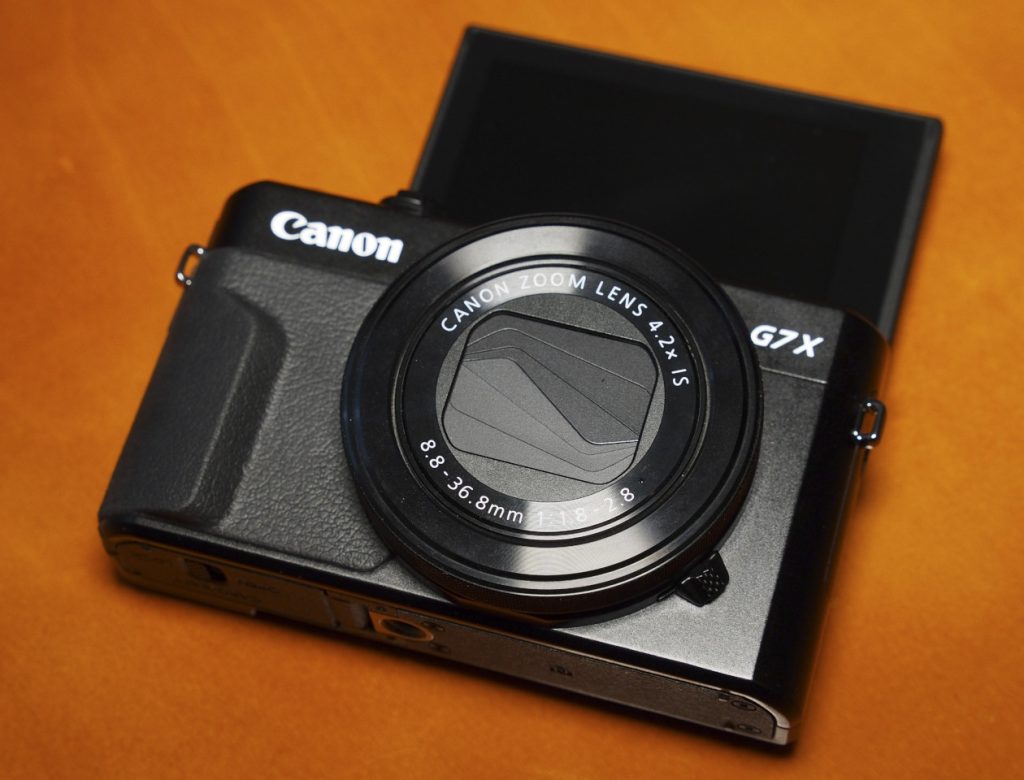
The Canon PowerShot G7 X Mark III is a compact camera that, while not designed exclusively for diving, has earned a place among underwater photographers thanks to its versatility and image quality. However, you will need a suitable waterproof housing to take it underwater.
Image Quality and Underwater Performance
This camera features a 20.1 MP CMOS sensor and a DIGIC 8 processor, which results in sharp, highly detailed images, even in low-light conditions. Underwater, this makes a real difference, as many cameras struggle to maintain clarity in low light.
While it doesn’t offer the advanced manual controls of a DSLR, it does allow for a fair amount of customization, which is useful for adjusting exposure and white balance underwater—essential for preserving true-to-life colors in a marine environment.
4K Video Recording and Live Streaming
A strong point is its ability to record in 4K without cropping. For those looking to capture high-quality video while diving, this is a notable advantage. It also offers live streaming capabilities, something uncommon for cameras of this type. This won’t be an essential feature underwater, but it can be useful if you also use it on the surface.
Compact Design and Portability
Its small size and light weight make it easy to take anywhere, and since it’s not a rugged DSLR-style camera, it won’t overwhelm those just starting out in underwater photography. However, as we mentioned before, it’s essential to have a sturdy and reliable housing if you plan to submerge it.
Pros:
- 4K video recording and live streaming
- Fast autofocus for sharp, clear shots
- Compact and easy to use
Cons:
- Not fully waterproof (can handle light water exposure, but not for deep dives)
- Limited underwater depth capability without a housing
3. Sony RX100 VII
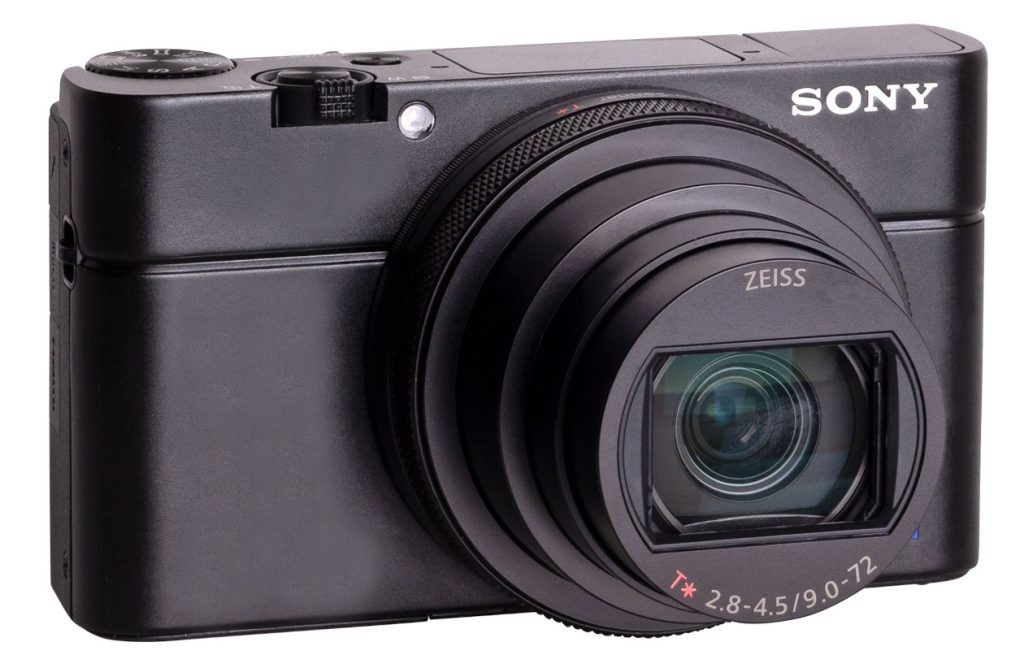
The Sony RX100 VII is a compact camera that has gained a reputation for offering professional-grade features in a tiny body. It’s not designed exclusively for diving, so you’ll need a housing, but it’s often considered by those seeking superior underwater image quality.
Image Quality and Focusing Speed
One of the main reasons to consider this camera is its 1-inch, 20.1 MP sensor, which offers excellent sharpness and dynamic range, even in low-light conditions. This is especially useful in underwater environments, where colors and contrast can quickly fade.
It also features a very fast and accurate autofocus system that responds well even when there’s movement, such as when tracking fish or capturing marine life in action. The focusing performance, coupled with continuous shooting at up to 20 fps, makes it ideal for capturing spontaneous moments.
4K Video and Manual Controls
Recording 4K video with advanced profiles like S-Log3 can be a major advantage if you plan to edit your clips with greater control over color and exposure. It also allows for slow motion recording at a high frame rate, which is fun if you like to play with those types of effects.
For more advanced users, it offers full manual controls, allowing you to fine-tune settings to suit the specific conditions of each dive. However, if you’re not familiar with manual photography, there may be a bit of a learning curve.
Size and Portability
Like other RX100 models, this is a very compact and lightweight device, making it practical for travel. However, keep in mind that a housing for this type of camera can be expensive, which increases your overall budget if you plan to use it underwater.
The RX100 VII’s portability is another significant advantage. Its compact size allows you to maneuver easily underwater, capturing shots from unique angles without being weighed down by heavy equipment.
Pros:
- Excellent image quality with a 1-inch sensor
- Fast autofocus and great low-light performance
- 4K video capabilities
Cons:
- Needs a housing for underwater use
- Relatively high price compared to some other models
4. Olympus Tough TG-6
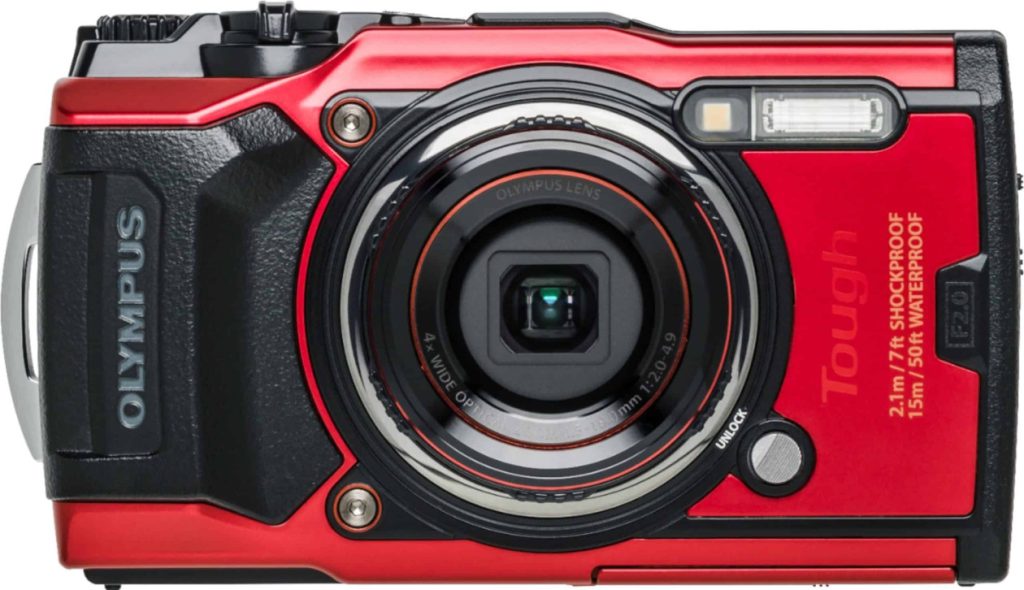
The Olympus Tough TG-6 is, as its name suggests, a camera designed to endure. It doesn’t require a housing for submersion in water and is designed specifically for those who practice extreme sports, snorkeling, or recreational diving. It’s not the most advanced in terms of technical specifications, but it is one of the most reliable in difficult conditions.
Toughness and Ease of Use
What stands out most about the TG-6 is its native durability: it can be submerged up to 15 meters without a housing, withstands drops from 2.1 meters, and withstands sub-zero temperatures. This makes it an excellent option for those who don’t want to complicate things with additional equipment and simply want to capture moments without worrying about protecting the camera.
In addition, its operation is quite intuitive. The buttons are large and easy to press even with gloves, which is a plus for those who dive with full equipment.
Image Quality and Underwater Modes
Although its sensor is relatively small (12 MP), the image quality is decent, especially considering its primary purpose: recording adventures, not creating works of art. Olympus has included several shooting modes specifically for underwater photography, which helps improve results without requiring advanced technical knowledge.
4K recording and a microscope mode for capturing close-up details also add versatility. While it doesn’t reach the level of professional cameras, it offers more than expected in this price and size range.
Expansion with Additional Housing
Although it can be used without a housing to a certain depth, the TG-6 is also compatible with housings that allow you to go down to 45 meters, which is essential for advanced divers. This makes it a camera that can grow with you depending on the type of dives you do.
Pros:
- Waterproof up to 15 meters (50 feet)
- Durable design (shockproof, freezeproof)
- Underwater modes for optimal photos
Cons:
- Lower resolution compared to other models (12 MP)
- Small screen that can be difficult to see in bright light
5. Nikon COOLPIX W300
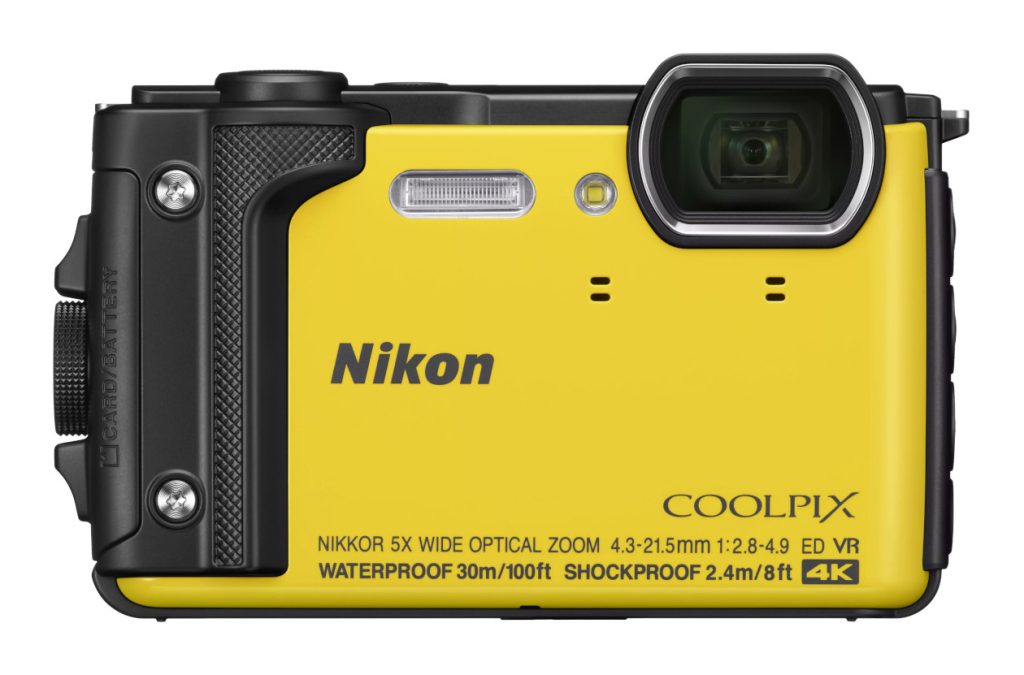
The Nikon COOLPIX W300 is a rugged compact camera designed to capture high-quality images in extreme conditions. It is specifically designed for those involved in water sports, hiking, and other outdoor adventures. Being waterproof to a depth of 30 meters, it is an excellent choice for recreational divers looking for a rugged, easy-to-use, and affordable camera.
Strength and Durability
The W300’s highlight is its resistance to the elements. It is not only waterproof but also shockproof, freezeproof, and dustproof. This makes it a solid choice for those looking for equipment that can withstand all types of conditions without the need for additional protection.
With a non-slip housing, the W300 is easy to handle, even in harsh conditions or while wearing diving gloves, giving it an advantage when capturing images while on the move or in tricky situations.
Image and Video Quality
The W300 is equipped with a 16 MP sensor, which is sufficient for capturing detailed images underwater. While it doesn’t have the same image quality as higher-end cameras, its performance is quite good, especially in favorable lighting conditions.
Additionally, the camera records 4K video at 30 fps, allowing you to capture underwater moments with great clarity and detail. It also features an underwater photography mode, which automatically adjusts the white balance to enhance colors, especially at depths where natural light may be limited.
Ease of Use
The W300 has a simple and intuitive design. The buttons are large and well-positioned, making it easy to use even with gloves on. Its 3-inch screen is large enough to allow good control of your images, although it may be a bit difficult to see underwater, as is common with compact cameras.
Pros:
- Waterproof up to 30 meters
- 4K UHD video recording
- Shockproof and freezeproof design
Cons:
- Not as compact as other underwater cameras
- Autofocus can be slower in low light
6. Fujifilm FinePix XP140

The Fujifilm FinePix XP140 is an all-terrain compact camera designed to withstand the most extreme conditions. If you’re looking for an affordable and easy-to-use option for your underwater adventures, this camera may be an excellent choice. With a rugged design and solid performance, the XP140 is ideal for those who want to capture quality images without the hassle of complicated settings.
Toughness and Durability
One of the XP140’s most notable features is its durability. This camera is designed to withstand extreme conditions: it’s waterproof up to 25 meters, shockproof, coldproof, and dustproof. This makes it an ideal choice for those involved in water sports or for outdoor adventures where equipment may be exposed to harsh conditions.
Its rugged, non-slip design also makes it easy to use with gloves, which is an advantage when shooting underwater or engaging in activities in cold climates.
Image and Video Quality
The FinePix XP140 is equipped with a 16.4 MP sensor, allowing for clear and detailed images. Although it doesn’t have the highest resolution of the cameras on this list, its performance is adequate for most recreational diving situations, especially in good lighting conditions.
In terms of video, the camera is capable of recording in Full HD at 60 fps, providing smooth footage to capture your dives. Although it doesn’t record in 4K, Full HD video is still a valid option for those who don’t need the highest resolution available.
Ease of Use
The XP140 is very easy to use, with an intuitive interface and large buttons that make operation easy, even when moving or underwater. The 3-inch screen is a good size, but like many waterproof cameras, it can be difficult to see underwater, especially in bright conditions.
Despite being an entry-level camera, the XP140 offers some manual controls, which can be helpful for those who want to experiment a little more with exposure and focus.
Pros:
- Waterproof up to 25 meters
- Affordable price with solid performance
- 4K video recording
Cons:
- Image quality may not match higher-end models
- Limited features for advanced photographers
7. SeaLife DC2000
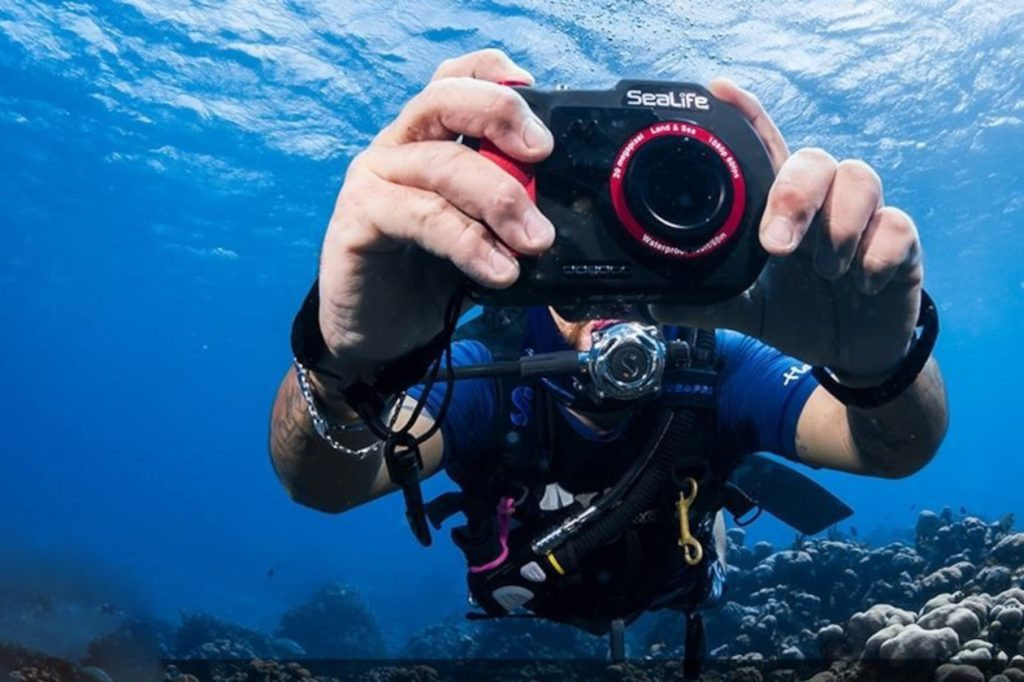
The SeaLife DC2000 is a compact digital camera designed specifically for underwater photography. With a high-quality sensor and rugged construction, the DC2000 is designed for those looking to capture sharp, vibrant underwater images without the need for complicated additional equipment. It is one of the most advanced underwater cameras in its category and an excellent choice for serious divers who want to capture every moment of their adventure.
Image and Video Quality
The DC2000 features a 20 MP sensor, allowing it to capture high-resolution images and exceptional detail, even in low-light conditions underwater. Its f/1.8 lens is ideal for capturing clear, bright photos, even in environments with limited lighting, such as the deep ocean.
In terms of video, the camera records in Full HD 1080p, providing stunning video quality for recording your dives. Although it doesn’t record in 4K, the recording quality is still excellent, especially for those looking for clear, smooth video for their aquatic adventures.
Ruggedness and Durability
The DC2000 is waterproof up to 18 meters deep without the need for an additional housing, making it perfect for diving or snorkeling. While it doesn’t have the same depth rating as some high-end cameras, its resistance to shock, dust, and low temperatures makes it a reliable choice for those who need a rugged, easy-to-use camera in demanding environments.
Ease of Use
Despite its advanced features, the DC2000 is easy to use. Its ergonomic design and well-laid-out controls allow users to navigate through settings without difficulty. Additionally, its 3.0-inch LCD screen is clear and easy to read, even underwater, making it easy to compose photos and configure parameters in real time.
While the camera offers a fully automatic mode for beginners, it also has advanced manual options that will allow experienced photographers to adjust exposure, focus, and other parameters for even more professional results.
Pros:
- 20 MP sensor for crisp, detailed photos
- Automatic color correction for vivid underwater shots
- Waterproof up to 18 meters
Cons:
- No 4K video capability
- Limited depth rating of 18 meters
8. Paralenz Vaquita
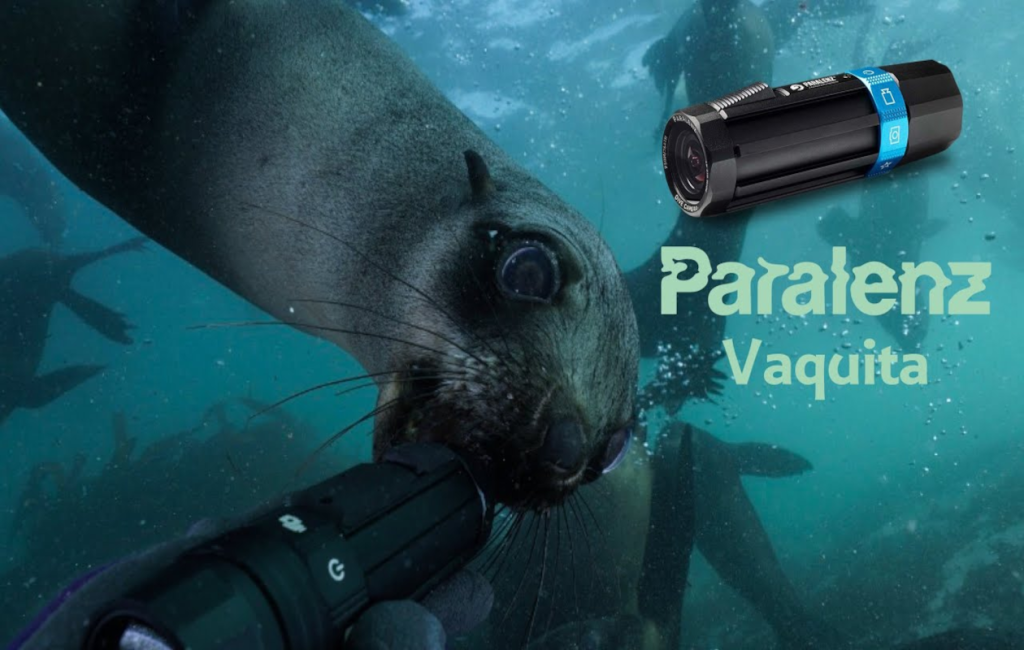
The Paralenz Vaquita is a camera specifically designed for diving, created to meet the needs of the most demanding divers. With a focus on underwater image quality and ease of use, this camera is perfect for those looking to capture incredible moments on their dives without complications.
Image and Video Quality
One of the standout features of the Paralenz Vaquita is its 13 MP sensor, which delivers high-quality photos and vibrant videos even at considerable depths. This camera is capable of recording in 4K at 30 fps, making it an excellent choice for those looking to capture sharp and smooth underwater videos.
What really sets it apart from other underwater cameras is its automatic color correction technology, which adjusts the colors of images and videos based on depth and lighting conditions, resulting in more natural and bright colors without having to make manual adjustments. This makes it a very attractive option for divers who don’t want to waste time adjusting settings while underwater.
Resistance and Durability
The Vaquita is waterproof to a depth of 200 meters, making it an ideal camera for professional and enthusiast divers exploring great depths. Its construction is designed to withstand use in extreme underwater environments, with a robust design that is easy to handle, even with gloves.
In addition, it is shock-resistant and has a design that makes it easy to use even in harsh conditions, making it a reliable choice for any type of diving.
Ease of Use
The Paralenz Vaquita stands out for its simplicity. With few buttons and an intuitive interface, it is very easy to use, even if you are new to underwater photography. The camera features a 2.3-inch LCD screen, which offers a clear view for framing your photos and videos, and automatic color correction means you don’t have to worry about complicated settings while underwater.
Its compact size and light weight make it ideal for taking on any type of dive, and its seamless recording system allows you to capture long videos without worrying about missing important details.
Pros:
- 200-meter waterproof rating, perfect for deep dives
- 4K video and 13 MP images
- Automatic color correction for better underwater shots
Cons:
- Lower resolution compared to other models
- Small screen may be difficult to view in bright sunlight
9. Panasonic Lumix LX10
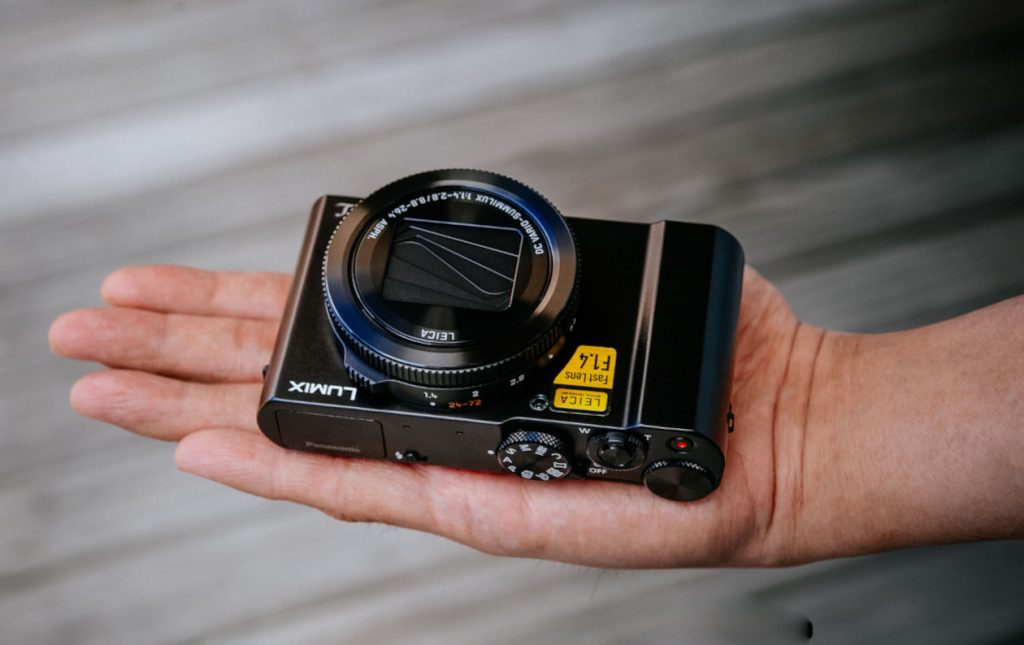
The Panasonic Lumix LX10 (known as the LX15 in Europe and some other markets) is a compact camera with serious aspirations. Like others on this list, it’s not inherently waterproof, but it’s become a popular choice among underwater photographers looking for a good balance between image quality, manual controls, and portability.
1-inch Sensor and Bright Lens
One of this camera’s strong points is its 20.1 MP 1-inch sensor, the same size found in models like the Sony RX100, but with an interesting detail: its f/1.4-2.8 lens. This wide aperture is a major advantage in low-light conditions, such as those often found underwater.
This lens also allows for good background separation (bokeh effect), useful for macro photography or underwater portraits with an artistic touch.
Manual Controls and 4K Recording
The LX10 offers full manual controls, so whether you’re already experienced or want to learn more advanced photography, this camera has room to grow with you. It records video in 4K, and while it doesn’t include advanced profiles like more expensive cameras, the results are sharp and smooth.
It also has a flip-up touchscreen, which isn’t very useful underwater (because of the housing), but does make it easier to use on the surface and in other situations.
Considerations for Underwater Use
Like other advanced compact cameras, it requires a waterproof housing if you plan to use it for diving. Panasonic and other manufacturers offer good-quality options, although they’re not always affordable. As for underwater performance, the manual white balance is useful and responsive when set up correctly.
Pros:
- Bright Leica lens (f/1.4–2.8) perfect for low-light underwater shots
- 1-inch 20.1 MP sensor delivers excellent image quality
- Full manual controls, ideal for advanced users
- 4K video with great detail and smooth playback
- Compact and lightweight body
Cons:
- Requires external housing for any underwater use
- No built-in underwater shooting modes or color correction
- Touch screen isn’t usable once inside the housing
- Not waterproof without additional equipment
10. Ricoh WG-60
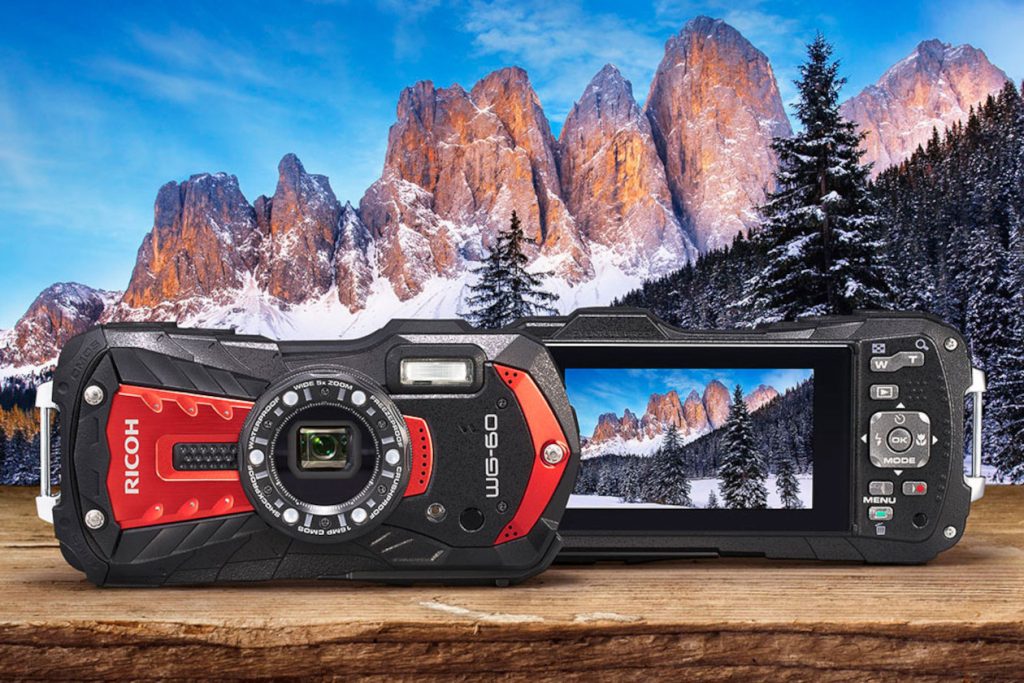
The Ricoh WG-60 is a compact camera built to handle tough environments — a solid pick for those looking for a rugged and affordable option for underwater use. It may not have the bells and whistles of high-end models, but it does offer a practical set of features for recreational divers or adventure seekers who want something simple and reliable.
Image and Video Performance
Equipped with a 16 MP sensor, the WG-60 captures decent photos in good lighting conditions. While it doesn’t compete with larger sensors in terms of detail or low-light performance, it still delivers clear and usable images for casual underwater photography. It also records Full HD video at 30 fps, which is perfectly fine for everyday snorkeling or shallow diving footage.
What sets this camera apart is the ring of LED lights around the lens. These help illuminate underwater subjects, especially in low-light conditions — a small but clever feature that’s actually quite helpful when shooting close-ups below the surface.
Built Tough for the Outdoors
The WG-60 is waterproof down to 14 meters (46 feet), making it suitable for shallow diving, snorkeling, and other water-based activities. It’s also shockproof, freezeproof, and dustproof, which means it can handle drops, cold weather, and sandy beach days without issue.
Its textured, rugged body feels secure in the hand, even when wet, and the large buttons make it easier to operate in the water — even with gloves on.
Easy to Use, Even for Beginners
One of the big advantages of the WG-60 is how straightforward it is to use. You don’t need to worry about manual settings or complex menus — just point and shoot. It also comes with a few fun filters and auto modes, making it a playful option for travelers and families who want something waterproof without diving into the deep end of photography tech.
The 2.7-inch screen is serviceable, though it can be a bit hard to see in direct sunlight or underwater glare.
Pros:
- Waterproof up to 14m, plus shockproof, freezeproof, and dustproof
- LED ring light around the lens helps with close-up shots underwater
- Full HD video recording, suitable for recreational use
- Rugged, grippy design that’s easy to hold and use, even with gloves
- Very beginner-friendly — no complex setup required
Cons:
- Only 16 MP, with limited low-light performance
- Not suitable for deep diving
- Screen visibility is limited in bright or underwater conditions
- No RAW image capture or advanced manual settings
Comparison Table
| Name/Model | Video Res | Photo Res | Max Depth | Battery | Stabilization | Price |
| GoPro HERO12 Black | 5.3K60 | 20 MP | 10 M | Improved | Yes | $399.99 |
| Canon PowerShot G7 X III | 4K | 20.1 MP | 40 m (w/ case | Good | Yes | $7498.00 |
| SONY RX100 VII | 4K | 20.1 MP | 30 m (w/ case) | Good | Yes | $1.298 |
| Olympus Tough TG-6 | 4K | 12 MP | 15 m | Excellent | Yes | $449.00 |
| Nikon COOLPIX W300 | 4K UHD | 16 MP | 30 m | Good | Yes | $386.95 |
| Fujifilm FinePix XP140 | 4K | 16.4 MP | 25 m | Good | No | $229.00 |
| SeaLife DC2000 | 4K | 20 MP | 18 m | Good | Yes | $699.00 |
| Paralenz Vaquita | 4K | 20MP | 350 m | Excellent | Yes | $799.00 |
| Panasonic Lumix LX10 | 4K | 20 MP | 40 m (w/ case) | Good | Yes | $597.99 |
| Ricoh WG-60 | 1080p | 16 MP | 14 m | Good | No | $246.95 |
Why is it important to choose your underwater camera wisely?
Choosing the right underwater camera isn’t just about picking the model with the most features or the lowest price. It’s crucial to consider your specific needs: How deep do you plan to dive? Do you need a camera with high resolution to capture fine details, or something simpler for family memories?
Durability is also key, especially if you engage in water sports in extreme conditions or plan to use it regularly. Take the time to research your options and find a balance between image quality, durability, and ease of use. Remember, the most important thing is that your camera allows you to capture those unique moments of your underwater adventure without worrying about equipment or complicated settings. The right camera will make every dive even more memorable!
Before Taking the Plunge: Considerations for Choosing Your Underwater Camera
Before making your final decision, consider crucial factors such as depth rating, image quality, video capabilities, durability, and ease of use.
Each of these cameras offers unique features catering to different diving needs, so assess your requirements carefully to find the perfect companion for your underwater adventures.
With the right camera in hand, you can dive into the depths of the ocean with confidence, capturing the breathtaking beauty of marine life and creating lasting memories to cherish for a lifetime. Happy diving and photographing!
